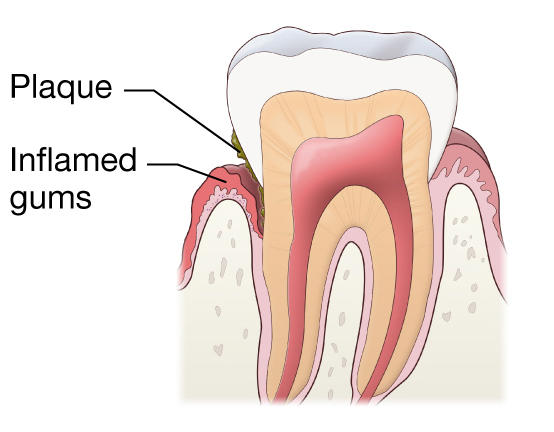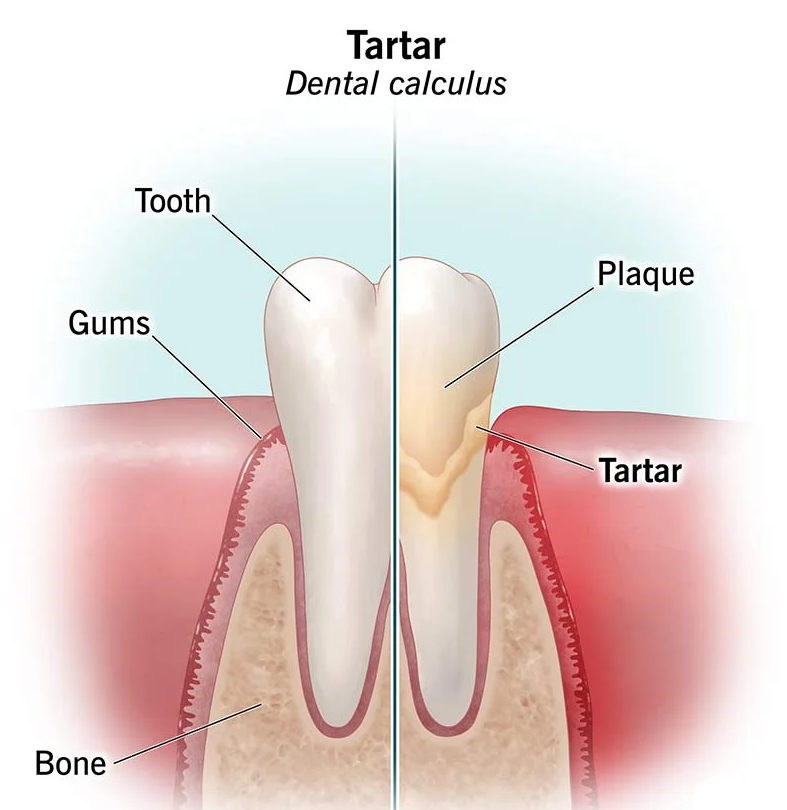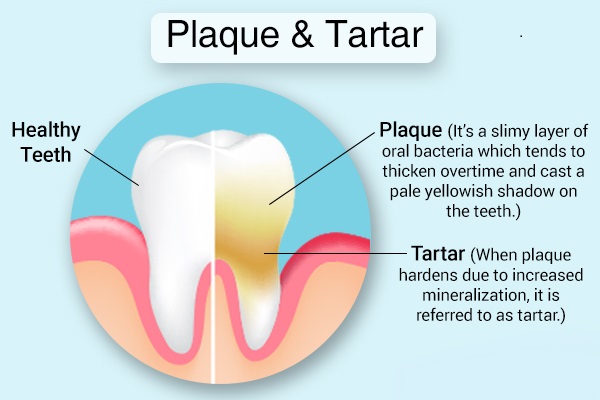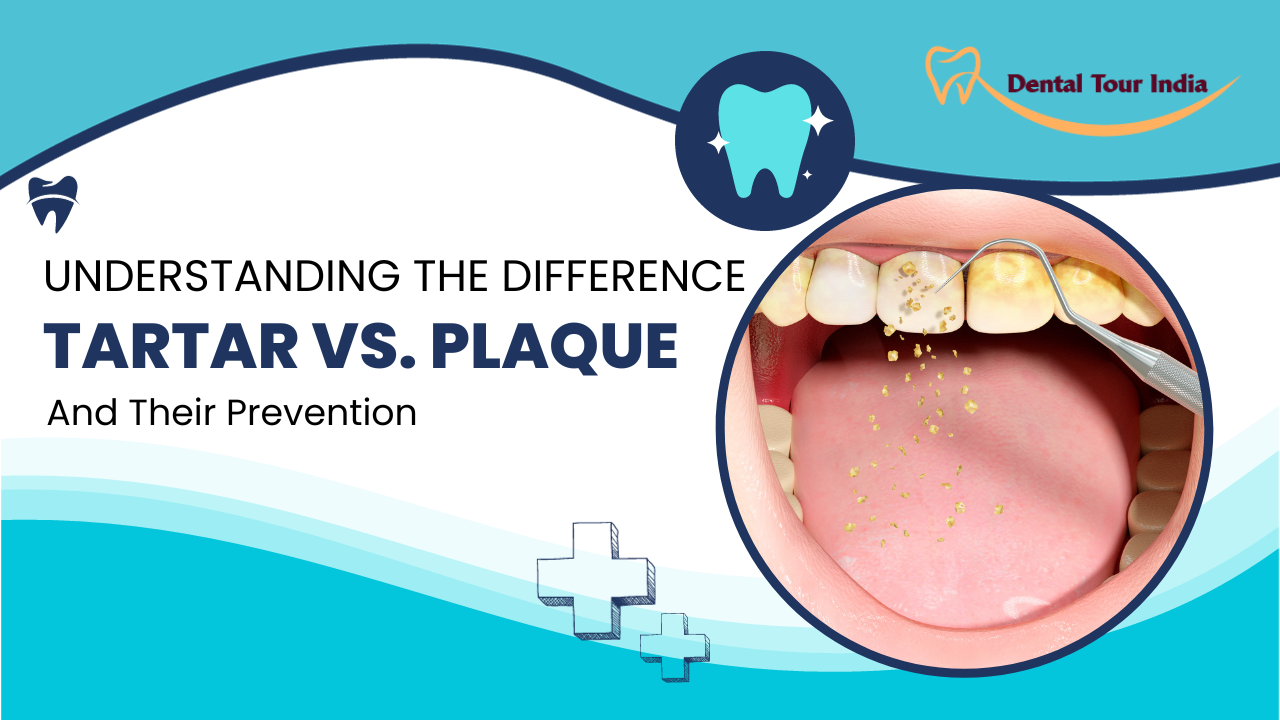Introduction
When it comes to oral health, we often hear about the dangers of plaque and tartar. These two dental nuisances are often used interchangeably, but they are not the same thing. Knowing the difference between plaque and tartar is crucial for maintaining good oral hygiene. Now, we will understand the distinctions between these two dental culprits and explore strategies to prevent both.
Plaque: The Sneaky Invader

Plaque is the soft, sticky film that forms on your teeth and gums every day. It consists of a colony of harmful bacteria, food particles, and saliva. When you consume sugary or starchy foods, these bacteria feed on the particles left in your mouth. As they consume these leftovers, they produce acids that attack your tooth enamel, leading to tooth decay and cavities.
Plaque is continuously forming in your mouth, and it’s essential to remove it regularly through proper oral care. If left undisturbed, plaque hardens and evolves into a more formidable adversary: tartar.
Tartar: The Hardened Foe
Tartar, also known as calculus, is plaque that has hardened over time. It forms a rough, porous layer on your teeth, which provides an ideal breeding ground for even more bacteria. Tartar is not only unattractive; it can also be the lead cause of severe dental issues, such as gum disease.
Unlike plaque, which you can remove through brushing and flossing, tartar cannot be easily eliminated at home. A professional dental cleaning is typically required to get rid of tartar build-up. If left undisturbed, tartar can lead to gum inflammation and various oral health problems.

The Connection Between Plaque and Tartar
Plaque is the precursor to tartar. When you don’t maintain proper oral hygiene, allowing plaque to accumulate, it eventually solidifies into tartar.
The transition from plaque to tartar can occur within a matter of days, making it crucial to stay consistent with your oral care routine.

Preventing Plaque and Tartar Build-Up
Preventing plaque and tartar build-up is the key to maintaining good oral health. Here are some strategies to help you keep these dental adversaries at bay:
- Brush Regularly
- Floss Daily
- Use Mouthwash
- Maintain a Balanced Diet
- Drink Water
- Chew Sugar-Free Gum
- Regular Dental Check-Ups
- Quit Smoking
The Consequences of Neglecting Plaque and Tartar
Neglecting the prevention and removal of plaque and tartar can result in a range of oral health problems, including:
- Tooth Decay
- Gum Disease
- Bad Breath
- Tooth Sensitivity
- Tooth Loss
- Systemic Health Risks
Conclusion
Knowing and understanding the difference between plaque and tartar is improtant for maintaining optimal oral health. Plaque is the soft, sticky film on your teeth that can lead to cavities, while tartar is the hardened form of plaque that can cause gum disease and other dental issues. By following a consistent oral hygiene routine, eating a balanced diet, and visiting your dentist regularly, you can prevent the formation of plaque and tartar, ensuring a healthier and more confident smile for years to come. Don’t underestimate the power of prevention and proper dental care – your smile will thank you!

